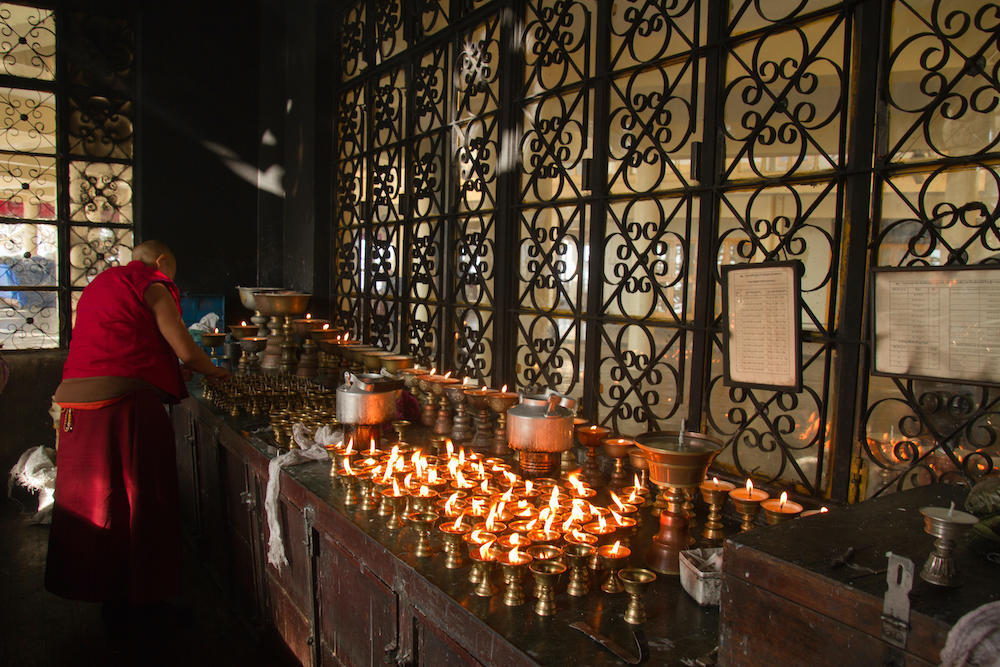Brahmacharya Explained: Your Guide to the Fourth Yama From the Eight Limbed Path of Yoga
Brahmacharya, or celibacy, is the fourth Yama in Patanjali’s Ashtanga Yoga Path. Patanjali laid out what is known as the Eight-Limbed Path in the Yoga Sutras to specify eight distinct steps to follow in order to reach Samadhi, or...

Brahmacharya, or celibacy, is the fourth Yama in Patanjali’s Ashtanga Yoga Path. Patanjali laid out what is known as the Eight-Limbed Path in the Yoga Sutras to specify eight distinct steps to follow in order to reach Samadhi, or enlightenment.
The Yamas (or ethical restraints) are the first step on that path, and there are five separate Yamas. We’ve previously explored the first Yama (Ahimsa or non-violence), the second Yama (Satya or truthfulness), and the third Yama (Asteya or non-stealing), so let’s dive deeper into the fourth Yama: Brahmacharya.
Brahmacharya translates as celibacy or complete abstinence from sexual activity and even thought. And much to the chagrin of modern-day yogis, Brahmacharya is an essential principle of Patanjali’s yogic path.
What Are the Yamas?
The Yamas are the first limb of the path to enlightenment that Patanjali compiled in the Yoga Sutras.
The Eight-Limbed Path consists of:
Yamas: Ethical Restraints Niyamas: Ethical Observances Asana: Seat of Meditation Pranayama: Extension of Life-Force Energy Pratyahara: Withdrawal of Senses Dharana: Single-Pointed Concentration Dhyana: Meditation Samadhi: EnlightenmentWhat Are the Eight Limbs of Yoga? Here’s Your Comprehensive Overview
As the first limb, the Yamas are the ethical restraints that a yogi must adhere to. These are essentially the “don’ts” on the yogic path.
There are five Yamas:
Ahimsa: Non-Violence Satya: Non-Falsehood Asteya: Non-Stealing Brahmacharya: Celibacy Aparigraha: Non-PossessivenessA Guide to the Yamas: The First Path of Yoga’s Eight Limbs
Let’s explore the fourth Yama, Brahmacharya, in greater detail.
What Is Brahmacharya?
Brahmacharya is the principle of celibacy and chastity. According to Patanjali, sexual abstinence helped to keep your mind and body pure on the spiritual path.
Historically, yogis lived as ascetics and renounced their lives as householders to go live the life of a recluse – typically in complete isolation in the caves of the Himalayas or the jungle.
These men (because at that time, only men were permitted to practice yoga) would literally hold funerals for themselves to symbolically end their lives as they knew them and burn all their worldly possessions.
They would then take internal vows (like the vow of celibacy) to practice yoga and go off to live a life of isolation. To them, practicing meditation to get closer and closer to the divine was more important than anything else. And they could not be distracted by their impure bodies or worldly pleasures.
Thus, celibacy was a natural practice in their lifestyle.
But most modern yogis don’t love the idea of giving up their everyday lives to live in isolation. Most modern yogis prefer to live as householders and have partners and families. So a very modern interpretation of this Yama has been explained as “sexual restraint.”
In this interpretation of Brahmacharya, yogis are encouraged to have only one, loving, committed partner and to regard the exchange of sexual energy as something sacred.
Of course, this interpretation greatly differs from Patanjali’s intended meaning, but is definitely more fitting to the lifestyle of a modern yogi.
Does Practicing Brahmacharya (the 4th Yama) Mean a Life Without Sex?
How Do You Practice Brahmacharya?
Of course, to practice this principle in its traditional sense, you need to practice complete abstinence from all sexual activity. This means no contact of any kind with others who you are sexually attracted to or even any thoughts about sexual activity.
The idea behind this principle is to focus all of your energy on the divine rather than focusing on impurities of this body or this world.
To practice the more modern interpretation of Brahmacharya, you obviously can’t sleep around. Instead, you’d need to consider sexual contact and energy to be sacred and only exchange that sexual energy with one, monogamous partner.
Again, of course, this is not a traditional interpretation of Brahmacharya but it is a modern view of how a householder can practice this Yama. But remember that, traditionally in this Classical Yoga era of Patanjali, householders were not yogis.
Brahmacharya: The Takeaway on the Fourth Yama From the Eight Limbs of Yoga
Brahmacharya is the fourth principle on this hierarchical path to enlightenment, preceded by non-violence, truthfulness, and non-stealing.
This principle is all about creating purity in body and mind by refraining from sexual activity of all kinds. But it has modernly been modified slightly to allow for householders to follow this path.
Truly practicing Brahmacharya allows us to be steadfast and focused on our spiritual path. And this opens the door to so many other opportunities along our journey toward enlightenment.

 Tfoso
Tfoso 
































